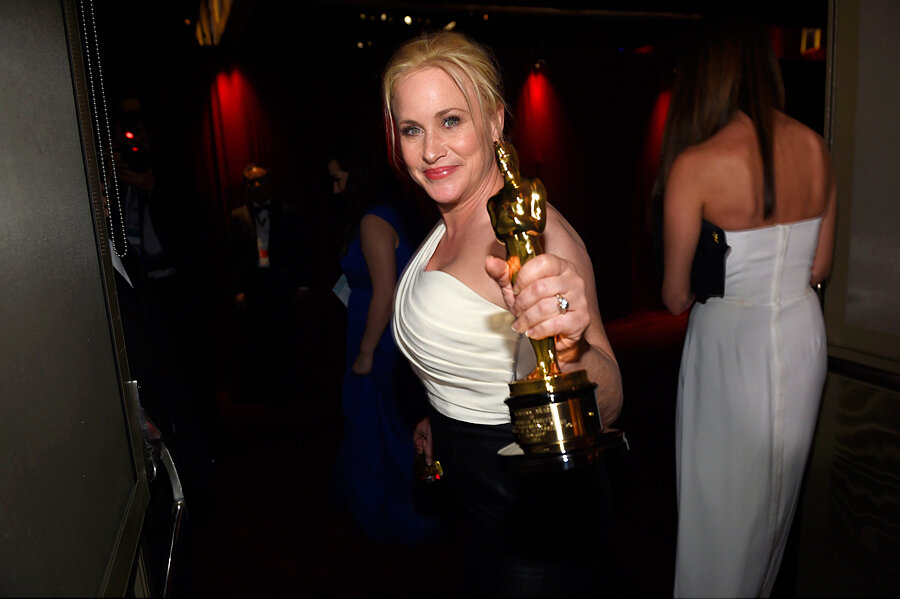Motherhood pay gap: Why US Labor Dept. backs Patricia Arquette's call
Loading...
The US Labor Department gained an unlikely ally Sunday night when Best Supporting Actress winner Patricia Arquette used her Oscar speech to champion pay equity in one of the night's most talked-about speeches.
“To every woman who gave birth, to every taxpayer and citizen of this nation. We have fought for everybody else’s equal rights. It’s our time to have wage equality once and for all, and equal rights for women in the United States of America,” she said.
Ms. Arquette's comments garnered the largest round of applause of the night – and lit up Twitter and Facebook.
And the US Labor Department wasted no time in tweeting its support of Arquette's cause.
The Labor Department, which holds a National Equal Pay Day each year to bring attention to pay inequity, has dedicated part of its work to raising awareness about the problem.
"When the Equal Pay Act was signed into law by President Kennedy in 1963, women were earning an average of 59 cents on the dollar compared to men" the Labor Department said on its website. "Today, women earn about 81 cents on the dollar compared to men — a gap that results in hundreds of thousands of dollars in lost wages. For African-American women and Latinas, the pay gap is even greater."
President Obama has also weighed in on the issue. "A woman deserves equal pay for equal work," he said in a 2014 State of the Union address. "It's time to do away with workplace policies that belong in a 'Mad Men' episode."
But there's one thing the President and the Labor Department didn't say that Arquette did.
In her acceptance speech, Arquette didn't just address "women." She addressed "every woman who gave birth."
In a few words, she made a very important distinction. As the Washington Post's Lydia DePillis pointed out, "There's not so much a gender pay gap as there is a motherhood pay gap."
It turns out the gender pay gap is relatively small and shrinking – women who have never married make five percent less than single men, and childless women make seven percent less than men, according to the Bureau of Labor Statistics.
The motherhood pay gap is gaping and growing: Married mothers make the least, a whopping 24 percent less than their male counterparts, followed by single mothers, who make 17 percent less, according to research by University of Massachusetts sociology professor Michelle Budig.
Why is the motherhood gap so large?
For starters, women have to take time off for pregnancies and often return to reduced hourly schedules after giving birth.
And as many mothers know, the cost of day care may make it prohibitive to return to work, a fact backed up by the Organization for Economic Cooperation and Development.
Discrimination also plays a role, as the Post reported. One experiment found that people are likely to rate mothers as less competent and committed to their work than non-mothers in ways that affect hiring and promotion decisions.
Which is why there were few actors as appropriate as Arquette, herself a single mother of two who played a single mother raising two kids by herself in “Boyhood,” to make the case.








